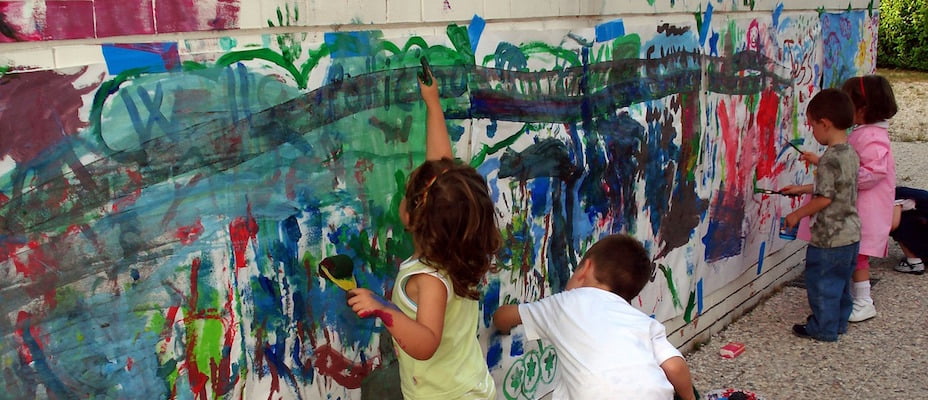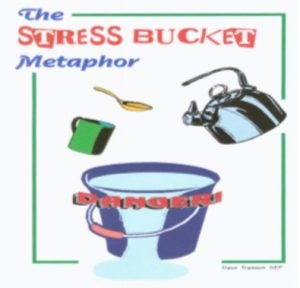Rethinking mental distress in children

Thinking of your child as behaving badly disposes you to think of punishment. Thinking of your child as struggling with something difficult disposes you to help them through their distress.
Coming full circle
After 40 years of working with children I return in a full circle to the seminal book that informed my teaching and psychology, ‘Children in Distress’ (1969), by Sir Alec Clegg the Director of Education for the West Riding of Yorkshire, published a few years before I was lucky enough to start my teaching there. He believed and promoted the philosophy of meeting children’s emotional needs and dealing with any inner distress or pain by expression through art, poetry, drama, self-expression and physical outlets. Only then can you meet their wider educational needs.
In an after dinner speech in 1972, Clegg highlighted some important principles for his audience of teachers-in-training at Bretton College, Yorkshire. These were:
- there is good in every child, however damaged, apparently repellent or ill-favoured he or she might be
- a child’s strengths and successes, on which a teacher can build, must somehow be found for every child (i.e. discover their nuggets of gold)
- all children matter and all can make a unique contribution to society
- happy relationships between the head, teachers, parents and pupils are all-important
- the life of the child and society can be enriched by the development of their creative powers
- encouragement and recognition of relative progress in a wide range of skills is far more important than punishment
- teachers, just as much as pupils, need support and thrive on positive recognition and specific high quality feedback.
A very prescient and modern perspective
I consequently believe, like Sir Alec, that mental distress in children is the root of all traumatised or anxious behaviour patterns observed of them in schools and society, and not due to biochemical imbalances or brain cell malfunctions. I passionately believed this then and do so even more today as a result of my professional experience.
The British Psychological Society, in a paper entitled ‘Psychological Health and Wellbeing’ (2009), stated:
Psychological models of mental health, quintessentially, emphasize the key role of a healthy, supportive, connected childhood in producing well adjusted adults…We fully support the proposals in the ‘New Horizons’ initiative to develop policies to ensure a healthy start to life for children.
My attempt at a useful working definition of ‘Mental Distress’ in the children we work with is, the gradual and sometimes not so gradual accumulation of inner anxieties and mental confusions which can trigger negative thought patterns, associated behavioural responses and the increased release of stress hormones. This in turn can exacerbate feelings of loss of personal power over the world they inhabit. Increasingly debilitating emotional responses can then interfere with their effective daily functioning in both educational and social settings impairing their future development and wellbeing.
The Stress Bucket
 My Stress Bucket Metaphor suggests that there are three different metaphorical levels of ‘stress triggers’ that go into into a child’s mental virtual vessel for their own accumulating stress. These are teaspoons, cup-fulls and kettle-fulls in ascending order.
My Stress Bucket Metaphor suggests that there are three different metaphorical levels of ‘stress triggers’ that go into into a child’s mental virtual vessel for their own accumulating stress. These are teaspoons, cup-fulls and kettle-fulls in ascending order.
Clear ‘kettle-fulls’ going into a child’s bucket are abuse, bereavement, bullying, domestic violence, family dysfunction, neglect, systematic punishment and toxic drug harm. All of these have major safeguarding implications for society. Child mental health professionals believe these key ones are responsible for the vast majority of mental distress in the children with whom we work.
The unique balance of these in individuals is the cause of the decline in mental health and wellbeing. When using the Stress Bucket in a conversational way, I do a ‘My turn – your turn’ script where I illustrate the different sizes by relevant age appropriate examples saying, “these are a few examples for children in similar situations at your age” and then pose the open question, “And what about in your life at the moment?” It is very rare not to engage a child in this process but obviously there will be different degrees of success.
Hopeful and nurturing alternatives
The earlier simply stated but transformative views for professionals and parents, of a child’s complex and interactive needs, may help us to better provide for the emotional needs and wellbeing of children in our schools. The following principles may also inform our decision making about the strategies we choose to support vulnerable children.
I believe that nurturing principles, not narcotic prescriptions, are the answer to meeting a vulnerable child’s emotional needs in schools and the wider society. Enabling a sense of belonging for children is paramount. The success of nurture groups in many schools and the inclusive ethos of these communities has conclusively proved this in my view.
Tender Loving Care is the answer, not punishment based regimes that culminate in crazy ideas such as repeated ‘isolation,’ Saturday morning detentions and eventually Permanent Exclusions, which can cause significant harm to children. Exclusion from a family and exclusion from a school are two very destructive approaches for vulnerable children. We have to sort issues out positively in the five hours a day we have to care for children within the Inclusive Ethos that we have chosen to create in most schools.
Italy has not excluded children from local schools since 1979 by law and Ontario has been fully inclusive for a similar period of time. The proven strengths of these systems for children’s collective wellbeing speaks for itself as can be witnessed on any visit to communities in these societies.
Hope, personal strengths and collaboratively finding creative solutions are the lifesprings of positive change in children and always will be. Solution focused planning methodologies like Solution Circles and P.A.T.H.s have a lot to offer in this regard.
To conclude:
“There is no more apt window on the soul of a society than the way it treats its children”
Nelson Mandela





Thanks Dan and team for posting this carefully edited version of my reflective essay.
The full article can be obtained on my Linkedin page and more on my campaign can be sourced on my blog : Challenging Overprescription by Professionals in Education for Young People : cope-yp @blogspot.com
The first quote was courtesy of the Gottman Institute website – sadly not mine.
Tremendous issues here. I am very glad to look your post.
Thank you so much and I am taking a look ahead to
touch you. Will you please drop me a e-mail?
Will do if you can leave your -mail address.
Best wishes and thanks for the feedback.
Dave
From Colin Newton of Inclusive Solutions – “Great article here on hopeful approaches to emotional distress rather than condemning behaviour in children and young people.” onthis and the longer Linkedin version – Thanks Colin for your inspiring work and support.
[…] boundaries and leading the way. From challenging the touch taboo in schools and in care contexts to rethinking mental distress in children. Over the past year we’ve also seen a real increase in the number of EPs taking to twitter […]